 | ||
Ingredients 1 1/2 oz White rum, 6 leaves of Mint, Soda Water, 1 oz Fresh lime juice, 2 teaspoons Sugar Preparation Mint sprigs muddled with sugar and lime juice. Rum added and topped with soda water. Garnished with sprig of mint leaves. Served with a straw. Served On the rocks; poured over ice Standard garnish Sprig of mint, Yerba buena Similar Margarita, Daiquiri, Caipirinha, Martini, Rum | ||
How to make a mojito cocktail
Mojito (/moʊˈhiːtoʊ/; [moˈxito]) is a traditional Cuban highball.
Contents
Traditionally, a mojito is a cocktail that consists of five ingredients: white rum, sugar (traditionally sugar cane juice), lime juice, soda water, and mint. The original Cuban recipe uses spearmint or yerba buena, a mint variety very popular on the island. Its combination of sweetness, refreshing citrus, and mint flavors is intended to complement the potent kick of the rum, and has made this clear highball a popular summer drink. The cocktail has a relatively low alcohol content (about 10% alcohol by volume).
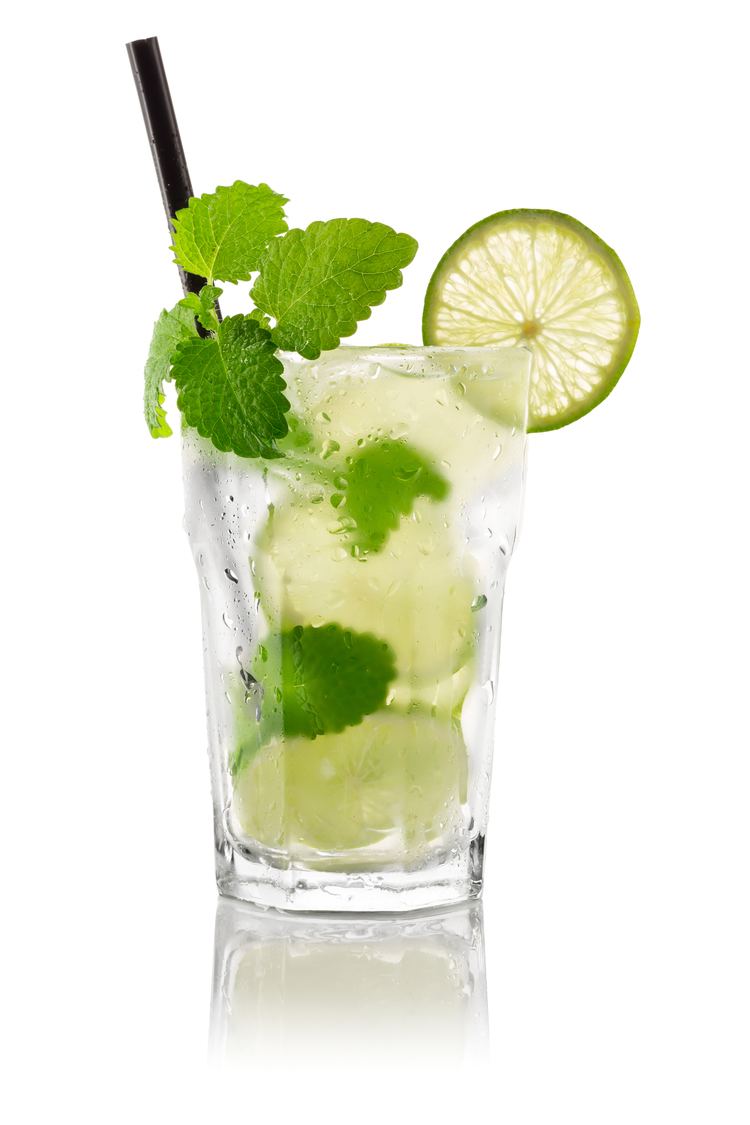
When preparing a mojito, lime juice is added to sugar (or syrup) and mint leaves. The mixture is then gently mashed with a muddler. The mint leaves should only be bruised to release the essential oils and should not be shredded. Then rum is added and the mixture is briefly stirred to dissolve the sugar and to lift the mint leaves up from the bottom for better presentation. Finally, the drink is topped with crushed ice and sparkling soda water. Mint leaves and lime wedges are used to garnish the glass.
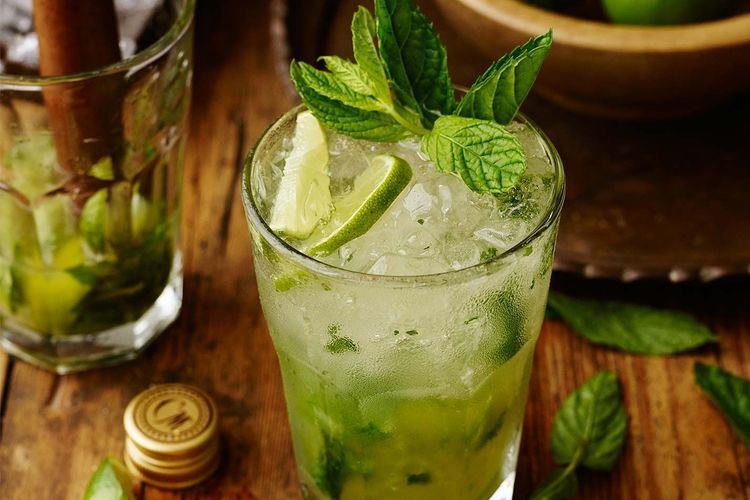
The mojito is one of the most famous rum-based highballs. There are several versions of the mojito.
How to make a mojito cocktail jamie oliver
History
Havana, Cuba, is the birthplace of the Mojito, although the exact origin of this classic cocktail is the subject of debate. One story traces the Mojito to a similar 16th century drink known as "El Draque", after Sir Francis Drake. In 1586, after his successful raid at Cartagena de Indias Drake's ships sailed towards Havana but there was an epidemic of dysentery and scurvy on board. It was known that the local South American Indians had remedies for various tropical illnesses, so a small boarding party went ashore on Cuba and came back with ingredients for an effective medicine. The ingredients were aguardiente de caña (translated as fire water, a crude form of rum made from sugar cane) mixed with local tropical ingredients: lime, sugarcane juice, and mint. Lime juice on its own would have significantly prevented scurvy and dysentery, and tafia/rum was soon added as it became widely available to the British (ca. 1650). Mint, lime and sugar were also helpful in hiding the harsh taste of this spirit. While this drink was not called a Mojito at this time, it was the original combination of these ingredients.
Some historians contend that African slaves who worked in the Cuban sugar cane fields during the 19th century were instrumental in the cocktail's origin. Guarapo, the sugar cane juice often used in Mojitos, was a popular drink among the slaves who named it. It never originally contained lime juice.
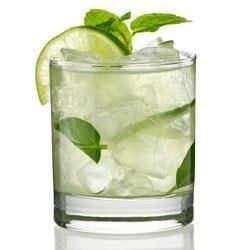
There are several theories behind the origin of the name Mojito: one such theory holds that name relates to mojo, a Cuban seasoning made from lime and used to flavour dishes. Another theory is that the name Mojito is simply a derivative of mojadito (Spanish for "a little wet"), the diminutive of mojado ("wet"). Due to the vast influence of immigration from the Canary Islands, the term probably came from the mojo creole marinades adapted in Cuba using citrus (as opposed to traditional Isleno types).
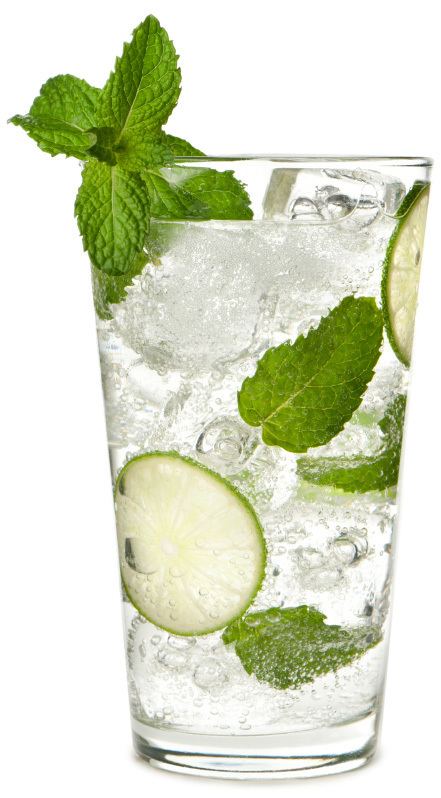
The Mojito has routinely been presented as a favorite drink of author Ernest Hemingway. It has also often been said that Ernest Hemingway made the bar called La Bodeguita del Medio famous when he became one of its regulars and wrote "My mojito in La Bodeguita, My daiquiri in El Floridita" on a wall of the bar. This epigraph, handwritten and signed in his name, persists despite doubts expressed by Hemingway biographers about such patronage and the author's taste for mojitos. La Bodeguita del Medio is better known for its food than its drink.
A report created in 2014 states that the Mojito is now the most popular cocktail in Britain.
Variations
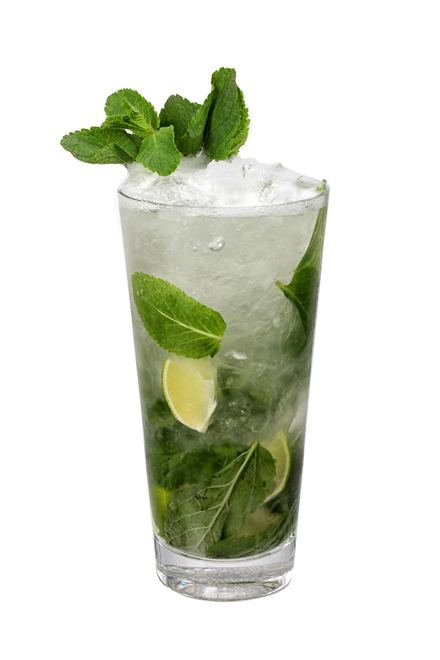
Many hotels in Havana also add Angostura bitters to cut the sweetness of the Mojito; while icing sugar is often muddled with the mint leaves rather than cane sugar, and many establishments simply use sugar syrup to control sweetness. Many bars today in Havana use lemon juice rather than fresh lime. The "Rose Mojito," which is a Mojito variation containing the rose-flavored spirit, Lanique, was first created at the Albert's Schloss bar in Manchester, England. A Mojito without alcohol is called a "Virgin Mojito" or "Nojito"
